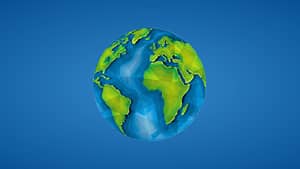
Beyond the Bottom Line: ESG Ratings – Procurement’s New Moral Compass
The world of procurement is undergoing a significant transformation, propelled by the growing importance of Environmental, Social, and Governance (ESG) factors.
Home » ESG: Finding a clean solution through the noise pollution
As Western Europe prepares for a second intense heatwave in as many months, the imperative for sustainability standards across the world of trade becomes increasingly evident. The debate around Environmental, Social & Governmental (ESG) has also heated up with various divisive opinions spilling into the public domain. On the one hand, the trade finance industry is excited at the prospect of investing in green finance initiatives. Yet, on the other, media representatives are questioning the value of the ‘S’ and ‘G’ aspects of the overall approach. However, at the heart of this conversation is a clear determination to find a workable solution. Wherever you stand on the topic, one thing is clear; the key must be to start with something manageable that we all know can achieve.
That’s why over the past month, Coriolis Technologies has continued the development of an ESG rating system built on non-biased, automated and scalable protocols. Inherent within this solution are universal standards that can be applied equally to both banks and businesses across the globe, thus quelling the industry’s current concerns. Our priority now is to address these concerns head-on with a world first: a product that rates every company anywhere in the world, of any size and in any sector using a standardised measurement. Since 2021, this has been the focus of our Kosmos Working Group, and we are now moving into the final stages of development.
Yet the “how” of all of this remains vague. What to measure is clear, but how to do this consistently and in a standardised way is not. There is a heavy reliance on self-reporting at a company level which means that the whole move towards making business and trade comply with sustainability standards will be at risk from incomparable, incomplete, or simply missing data. Thus, to avoid inevitable accusations of “Greenwash” and the compliance quagmire experienced with Anti-Money Laundering and Know Your Client legislation, the definition of how to measure sustainability in a standardised way must become a regulatory pre-requisite.
An automated solution:
Building from an approach taken by the International Chamber of Commerce’s joint position paper on measuring sustainable trade, which puts forward a proposal to use the SDGs as a framework for the approach to financial reporting, we can create an automated and consistent mechanism for measuring sustainability. This initial framework is helpful, yet there is little guidance on exactly what needs to be measured and, most importantly, what is the base unit of measurement.
The solution is to use an approach developed by the United Nations Economic and Social Commission for Asia and the Pacific, first published in 2019, by matching product HS codes (used in international customs and excise records) to Sustainable Development Goals. By consistently focusing on trade flows between countries, we can build a picture of the sustainability of global activity and cross-reference this against all regulations mentioned above while also creating a scalable framework that can incorporate any potential future regulations.
The approach reveals some interesting findings.
Trade generally across the world creates more negative contributions to SDGs than positive ones. On a scale of -1 to +1, where -1 is all trade contributes negatively, zero is neutral, and +1 is all trade contributes positively, world trade comes out at -0.58. In other words, the balance between positive and negative contributions to SDGs is tipped predominantly towards negative SDGs: some 80% of the value of world trade is unsustainable in this sense.
Emerging economies on a simple match like this are slightly more “sustainable”, although still largely negative, simply because of the fewer consumer products they trade. The poorest economies have a completely different structure to trade in developed world economies. For example, Madagascar’s cereal imports were some $206m in 2020, while automotive imports were similar at just $214m and on a steady downward path since 2017. In other words, imports are often for subsistence purposes rather than aimed at meeting luxury or consumption-based markets. Under these circumstances, a “better” ranking, insofar as it reflects lower economic development, is not a good thing. But what it does mean is that the SDG-related risks of trade are lower and that such countries should not be excluded from trade deals or trade finance on the grounds of sustainability since, comparing like with like, their trade is less environmentally damaging. This ultimately offers a framework that levels the playing field whereby emerging markets can develop ESG strategies allowing them to directly compete with developed economies.
Creating a sustainability trade profile like this is a practical conceptual first step to building a fully-fledged country ESG risk trade profile. HS codes in themselves are not products; they are product categories. Matching them beyond the category to sector and activity levels is potentially over-aggregating, creating a stylised picture. The system must balance the risks of false positives or negatives at a company level, but using this approach against the imperative for finding a quick and straightforward measurement creates a compelling call to action from which the industry can grow.
This scoring system is a wake-up call for world trade and policymakers worldwide. Some of the most advanced economies have the least sustainable trade accounting for some $18.5tn in value terms in negative contributions to responsible consumption and production. If we are to meet the ambitious targets laid out at COP 26, we cannot afford to ignore these messages. Most world trade is unsustainable; where it is not, it is a symptom of under-development.
There are further advantages to this process. First, since we know where the most significant negative contributions are likely across world trade, we know the levers we should pull. Second, we also know the sectors to blame for the low scores of some countries: automotive, consumer electronics, machinery and components, plastics, iron and steel, and oil and gas. Suppose Governments can implement policy incentives toward using electric cars and clean energy. In that case, this may address some of the current negative roles that automotive and fossil-fuel trade play.
These are age-old challenges, and addressing them will be neither quick nor easy. However, if we know how to measure them, we can also measure progress towards addressing them, therefore creating a streamlined solution stripped of any sanctimony.
Our Sustainability tracking solution is currently in being tested by our Kosmos Working Group (KWG): a non-competitive working group, including banks, insurers, and professional bodies. Click here to learn more about the KWG. We expect to open the solution up to a wider audience towards the close of 2022.
Submit your details below, and we will add you to our database and update you on the progress of development and the release date of version 2.0.
Please note, your online safety and security are important to us. We understand the sensitivity of your data and will never pass your information on to any third party. Your data will be added to our private database so that we can notify you of any upcoming releases and send you our monthly updates.

The world of procurement is undergoing a significant transformation, propelled by the growing importance of Environmental, Social, and Governance (ESG) factors.

TradeSun and London Forfaiting Company (LFC) have announced an agreement for LFC to leverage TradeSun’s digital technology to advance their risk and compliance capabilities, with focus on ESG sustainability, across global trade.

Whether ESG and sustainability-linked initiatives and policy meet the needs of developing economies remains a topic of intense debate